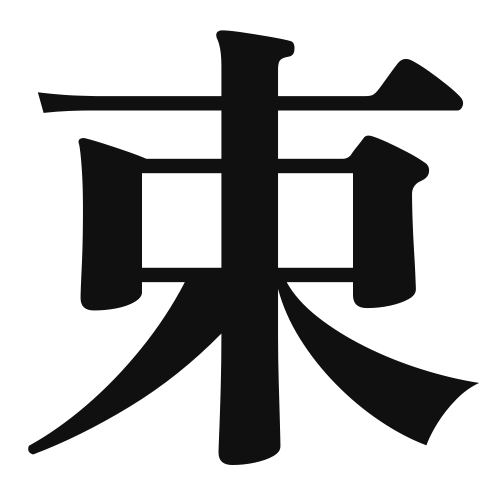1. Overview of Meaning
The kanji “束” (pronounced “soku” or “taba”) primarily means “bundle” or “bunch.” It refers to a collection of items tied together, such as a bundle of sticks or a bunch of flowers.
2. Formation and Radical
Formation of the Kanji: The kanji “束” is a compound character that combines elements to convey its meaning. It consists of the radical “木” (tree) and the phonetic component “束,” which together suggest the idea of binding or tying together items made from wood.
Radical: The radical of “束” is “木,” which relates to trees and wood, reinforcing the concept of binding natural materials.
3. Examples of Usage
Common Words and Phrases: Some frequently used words that include “束” are:
- 束ねる (tabaneru) – to bundle or tie together
- 束縛 (sokubaku) – restraint or binding
Example Sentences in Daily Conversation:
- 花束を作るために、いくつかの花を束ねました。
- (I tied together several flowers to make a bouquet.)
4. Synonyms and Antonyms
Similar Kanji: A similar kanji is “群” (gun), which means “group” or “crowd.” While “束” emphasizes the idea of binding items together, “群” focuses on the concept of a collection of items or people without the binding aspect.
Opposite Kanji: An antonym is “解放” (kaihō), meaning “release” or “liberation.” This contrasts with “束,” which implies binding or restriction.
5. Cultural and Historical Background
Relation to Japanese Culture: The concept of “束” is significant in Japanese culture, particularly in traditional practices such as flower arranging (ikebana), where flowers are often bundled together in artistic ways.
Proverbs and Idioms: One common expression is “束の間” (tabunoma), which means “a brief moment” or “a fleeting time,” reflecting the transient nature of life, much like a bundle that can be easily untied.
